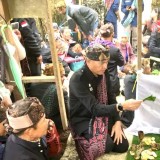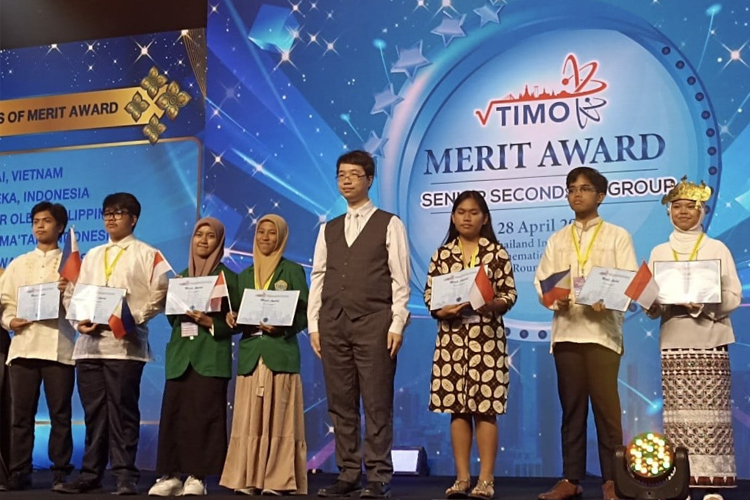TIMES HONGKONG, JAKARTA – The National Research and Innovation Agency (BRIN) has documented and recognized 63 varieties of rice dishes, known as "sega," as cultural identities of Indonesia in the culinary field, which have the potential to support the development of the creative economy.
"Rice is a familiar element in the lives of Indonesians. Exploring the diverse rice dishes of Indonesia and various regions is an intriguing endeavor," stated Ade Mulyanah, Head of the BRIN's Center for Language, Literature, and Community Research in Jakarta on Wednesday.
She explained that among the 63 described rice dishes, there are varieties such as roasted rice (sega bakar), rice cooked in coconut milk (sega liwet), tiny rice (sega kucing), royal rice (sega ningrat), savory rice (sega gurih), marinated rice (sega lulut), and blessed rice (sega berkat).
In addition to the documented rice dishes, BRIN has also noted rice dishes with sub-variants such as yellow rice (sega kuning), blessed rice (sega berkat), festive rice (sega megana), and cone-shaped rice (sega tumpeng).
Furthermore, there are many rice dishes found but not yet documented, including steamed rice with palm sugar (sega kulup pe), rice cooked in coconut milk (sega thewel), spiced rice (sega seredan), pounded rice (sega tempong), wrapped rice (sega penggel), rice served with grombyang (sega grombyang), intricate rice (sega ruwet), traditional rice cake (sega jamblang), and hearty rice (sega krawu).
Ade emphasized that Indonesian cuisine is inseparable from rice. Rice is not just a food ingredient but a symbol of diversity, unity, and daily life in Indonesian culture. Some people even refuse to change citizenship because they cannot give up rice.
"This is truly extraordinary as it connects with national identity. Rice is not only the preferred choice but also considered an essential part of various dishes," she remarked.
Through various BRIN research initiatives, rice from various ethnic groups and regions in Indonesia serves as the centerpiece of dishes with different names and varieties, which can have implications beyond mere food consumption and contribute to the creative economy.
Ade hopes that research on rice will contribute to the improvement of various businesses that utilize rice as a commodity for Micro, Small, and Medium Enterprises (MSMEs).
Rice is cooked either by boiling or steaming, resulting in dishes such as steamed rice (sega liwet) and fried rice (sega dag-dangan). Steamed rice is cooked in a pot or kettle, while steamed rice is prepared using a steamer or steaming pot.
Rice is a staple food for Indonesian society, except for the Papuan population and some other regions where sago and corn are consumed.
As a dish or menu item, rice dishes are accompanied by side dishes and vegetables. Thus, various rice-based dishes with different vegetable and meat variations, presentation styles, packaging, and functions (daily consumption, health benefits, cultural rituals, etc.) have emerged.
BRIN Linguistics Researcher Wiwin Erni Siti mentioned that some rice dishes are now rare or even extinct (sega lulut, sega cemedhing, sega krawu, sega sawut, sega kepyar, sega kopyor). However, everyday, culinary, or cultural rice dishes that are still enjoyed today include fried rice (sega goreng), yellow rice (sega kuning), steamed rice (sega liwet), mixed rice (sega rames), and cone-shaped rice (sega tumpeng). However, the current version of cone-shaped rice known to the public is not as elaborate as before.
Director of Research and Innovation Utilization at BRIN, Dadan Nugraha, explained that rice is not only related to food or gastronomy but also closely tied to various traditional rituals. Rice has been passed down through generations and is a tradition during processes such as birth, marriage, pregnancy, or even death.
"There is local wisdom embedded in various rice-based dishes, especially those with the potential to develop a creative economy based on local wisdom," said Dadan.
He regretted that many traditional rice-based dishes are becoming less known or appreciated, especially among the younger generation, as time progresses.
This trend has the potential to erode the continuity of local wisdom values implicit in rice-based dishes, which actually serve as guidelines for communities or social groups in their way of life. (*)
| Writer | : Imadudin Muhammad |
| Editor | : Khodijah Siti |
























